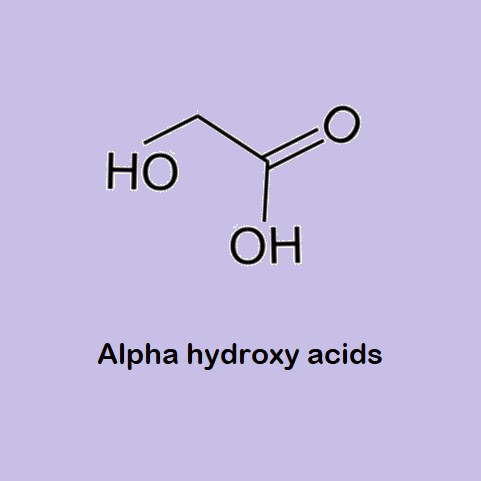
Alpha hydroxy acids (ahas)
Scientific names: Hydroxysuccinic acid, Monohydroxysuccinic acid (Malic acid), 2-hydroxypropionic acid (Lactic acid), Hydroxyacetic acid (Glycolic acid), Dihydroxysuccinic acid (Tartaric acid), Gluconolactone
Alternate names: Acides Alpha-Hydroxylés, Acidos Alfa-Hydroxi, AHA, Alfahidroxiácidos, Alpha Hydroxy Acides
Actions: Analgesic, Dermatological
Background
Alpha hydroxy acids (AHAs) are a group of natural acids found in foods, including citric acid, glycolic acid, lactic acid, malic acid, and tartaric acid.
Alpha hydroxy acids seem to work by removing the top layers of dead skin cells. They can also increase the thickness of deeper layers of skin, promoting firmness.
People commonly use alpha hydroxy acids in cosmetic products for skin conditions, including dry skin and aging skin. The scientific evidence varies depending on the specific alpha hydroxy acid used.
This is a general review of alpha hydroxy acids as a group. See information on specific alpha hydroxy acids, such as citric acid, lactic acid, glycolic acid, malic acid, and tartaric acid, to learn more.
Alpha hydroxy acids seem to work by removing the top layers of dead skin cells. They can also increase the thickness of deeper layers of skin, promoting firmness.
People commonly use alpha hydroxy acids in cosmetic products for skin conditions, including dry skin and aging skin. The scientific evidence varies depending on the specific alpha hydroxy acid used.
This is a general review of alpha hydroxy acids as a group. See information on specific alpha hydroxy acids, such as citric acid, lactic acid, glycolic acid, malic acid, and tartaric acid, to learn more.
Safety Safety definitions
Alpha hydroxy acids represent a group of natural products. Some are taken by mouth, some are applied to the skin, some are applied in the vagina, and some are inhaled. Safety varies. See specific alpha hydroxy acids for more information.
Special Precautions & Warnings:
Pregnancy and breast-feeding: See specific alpha hydroxy acids for safety information.Effectiveness
Effective Effectiveness definitions
Alpha hydroxy acids represent a group of natural products that are used alone or in combination. See specific alpha hydroxy acids for effectiveness information.
Dosing & administration
Alpha hydroxy acids represent a group of natural products. Some are taken by mouth, some are applied to the skin, some are applied in the vagina, and some are inhaled. People commonly use alpha hydroxy acids in cosmetic products. See specific alpha hydroxy acids for more details.
Interactions with pharmaceuticals
See specific alpha hydroxy acids for interactions with medicines.
Interactions with herbs & supplements
See specific alpha hydroxy acids for interactions with herbs and supplements.
Interactions with foods
There are no known interactions with foods.
vital.ly has licensed monographs from TRC Healthcare.
This monograph was last reviewed on 12/04/2024 10:00:00 and last updated on 04/11/2020 02:35:12. Monographs are reviewed and/or updated multiple times per month and at least once per year.
Natural Medicines disclaims any responsibility related to medical consequences of using any medical product. Effort is made to ensure that the information contained in this monograph is accurate at the time it was published. Consumers and medical professionals who consult this monograph are cautioned that any medical or product related decision is the sole responsibility of the consumer and/or the health care professional. A legal License Agreement sets limitations on downloading, storing, or printing content from this Database. No reproduction of this monograph or any content from this Database is permitted without written permission from the publisher. It is unlawful to download, store, or distribute content from this site.




